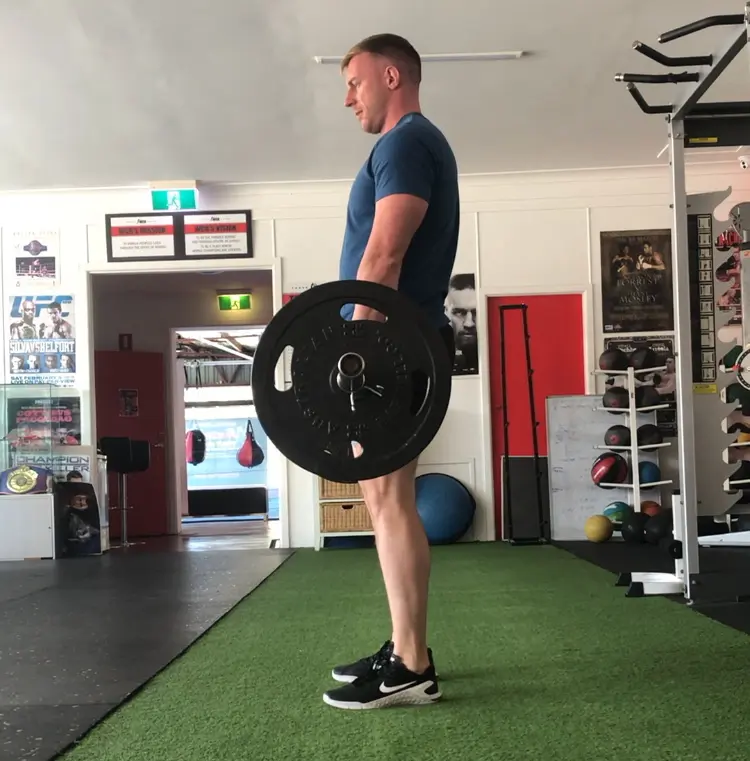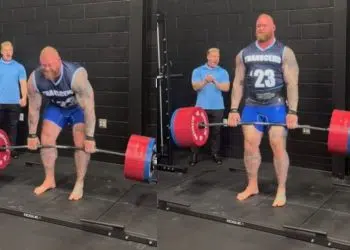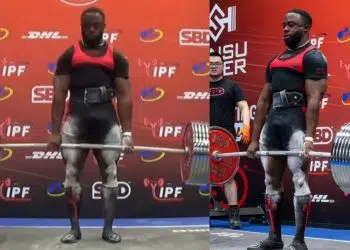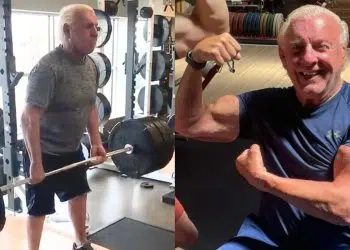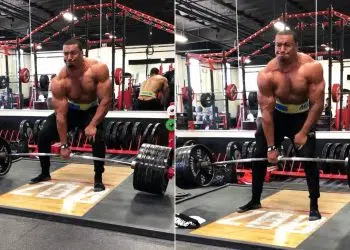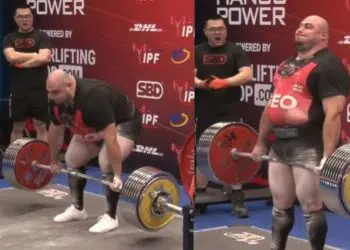The deadlift is one of the most widely-performed exercises in the gym by people wishing to build strength and muscle in their lower body.
Whilst the deadlift may look straightforward enough i.e. stand over the bar and pick it up, there are some important technical cues to take into consideration.
Lifters who fail to use proper technique are often the ones who end up hobbling around for the next few days with anywhere from mild to excruciating back pain.
Outside of an underlying issue, and assuming that the lifter is truing within their limits, a well-performed deadlift should not elicit any kind of back pain.
Why Does Your Lower Back Hurt After Deadlifts?
Legendary strength coach Dan John is well-known for saying:
“It’s not the squat that hurts your knees…it’s the way you squat.”
Get Fitter, FasterLevel Up Your Fitness: Join our 💪 strong community in Fitness Volt Newsletter. Get daily inspiration, expert-backed workouts, nutrition tips, the latest in strength sports, and the support you need to reach your goals. Subscribe for free!
The same is true for the deadlift.
The majority of low back complaints in the deadlift typically stem from issues with the lifter’s technique, with two of the most common problems being:
- The lifter failing to stabilize their lower back sufficiently, which can cause it to flex under heavy loads
- The lifter attempting to extend their lower back in order to lift the weight, instead of using hip extension
However, whilst some movement in the lumbar spine during the deadlift is unlikely to be any issue whatsoever, when loaded heavy and made to move to extreme end-ranges, the risk of back injury is substantially increased.
Essentially, the lifter’s focus should be to minimize the movement from the low back during the lift, by locking the lumbar spine in place with a stiff abdominal contraction and then producing all movement from the lower body only.
A few improvements to both set up and performance can drastically improve support for the lumbar vertebrae and prevent the occurrence of pain, both during the lift and in the days afterwards.
This article will cover the 3 most common reasons for back pain during the deadlift and will give you the correct coaching cues in order to overcome them.
Reason #1: Standing Too Far From The Bar
In the set up, the bar should be in contact with the shins.
The further the bar is from the shins, the greater the lever arm between the bar and lower back.
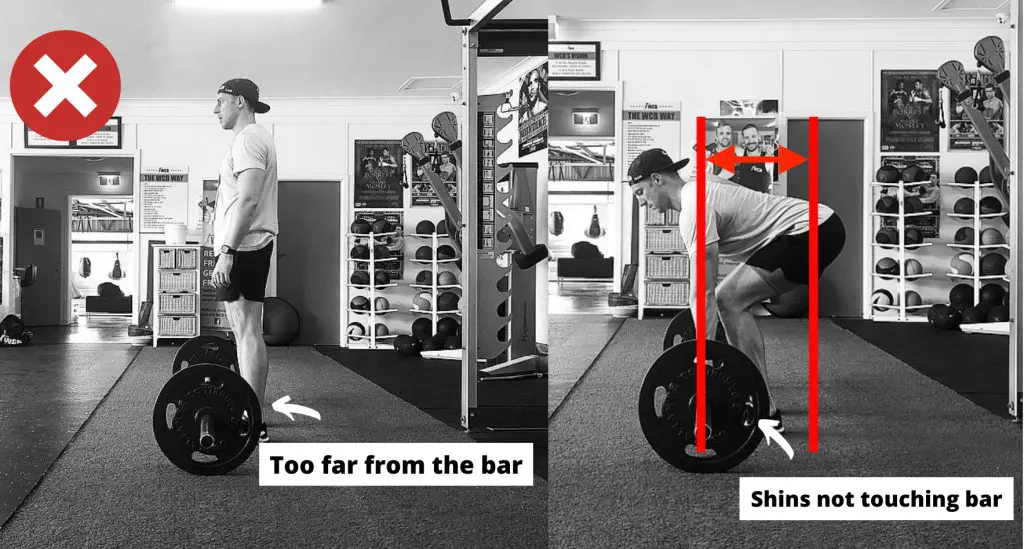
The longer this lever arm, not only must the lower body do more work in order to move the bar off the floor, but the more work has to be done in order to stabilize the lower back.
If the weight on the bar is heavy, this can overcome the ability of the core to stabilize the lumbar vertebrae, which can cause the lower back to flex under load. This can expose it to unwanted stress and result in back pain.
Before you bend down to take hold of the bar, stand with your shin approximately 1 inch away. This will allow the shins to come into light contact once you’ve bent over and bent the knees.
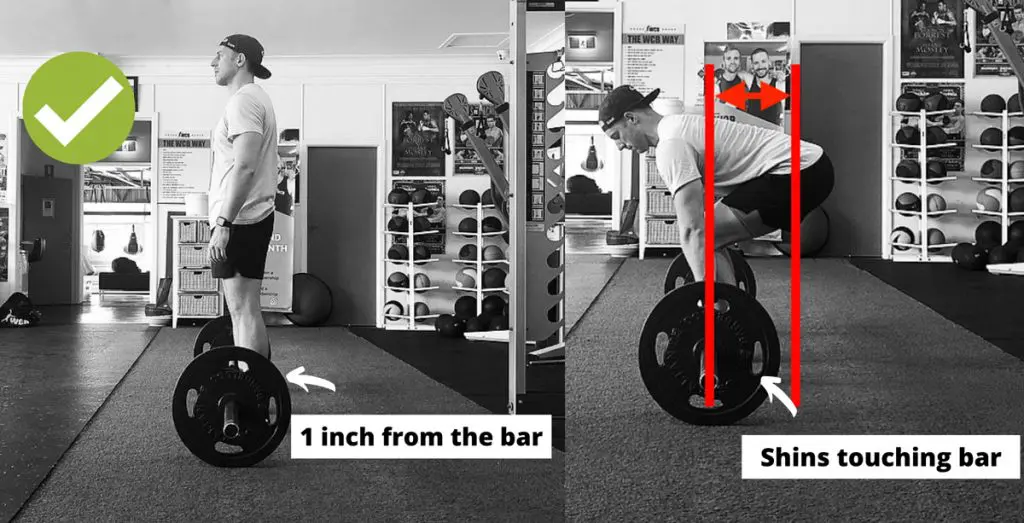
Reason #2: Not ‘Taking The Slack Out Of The Bar’
This is one of the most commonly-made mistakes seen in the deadlift.
The lifter may assume the proper deadlift set up, but then ‘yank’ the bar off the floor.
When this happens with heavy weights, it’s not uncommon for the low back to flex immediately the moment the weight budges from the floor.
It can take up to 0.5 seconds in order to generate maximum muscular tension, which means tension in the core muscles must be created prior to the weight being lifted in order to stabilize the lower back.
If the lifter hasn’t created sufficient tension in the upper body prior to lifting the weight, then there is a risk of lumbar flexion during the movement. Whilst a little lumbar flexion is of no concern, if this becomes ‘end-range’, then there is a risk of a serious lower back injury.
So how do you create optimal core stability?
Try this little experiment –
If you hold your hand out in front of you, and push against the air, how much full body tension can you create?
Some, maybe. But not maximal.
Now put your hand up against a wall and push against it.
Level Up Your Fitness: Join our 💪 strong community in Fitness Volt Newsletter. Get daily inspiration, expert-backed workouts, nutrition tips, the latest in strength sports, and the support you need to reach your goals. Subscribe for free!
Can you feel the difference in the amount of tension you can create in your whole body?
The same principle applies to the deadlift set up.
Prior to performing the lift, it’s crucial that the low back is stabilized and ‘locked’ into place. However, in order to generate that kind of tension, the body must be working against some kind of resistance.
To do this, the lifter needs to close off the tiny gap that exists between the bar and plates by pulling the bar upwards against the plates. This is termed ‘taking the slack’ out of the bar.
By doing this, they’re working against some resistance, and are now capable of maximizing tension in the upper body, which will help support the lower back.
Since it takes less than 0.5 seconds for the bar to travel up and hit the top of the plates, failing to ‘take the slack’ out of the bar prior to lifting the weight doesn’t give the lifter enough time to create the stability required to lock the low back in place, and prevent against agonizing back injury.
Check out the following video for a demonstration of how to take the slack out of the bar: –
Reason #3: Leaning Back At The End Of The Lift
At the end of the lift, some lifters have a tendency to lean back.
Leaning back at the end of the lift serves absolutely no purpose whatsoever, and instead can cause the lumbar spine to hyperextend.
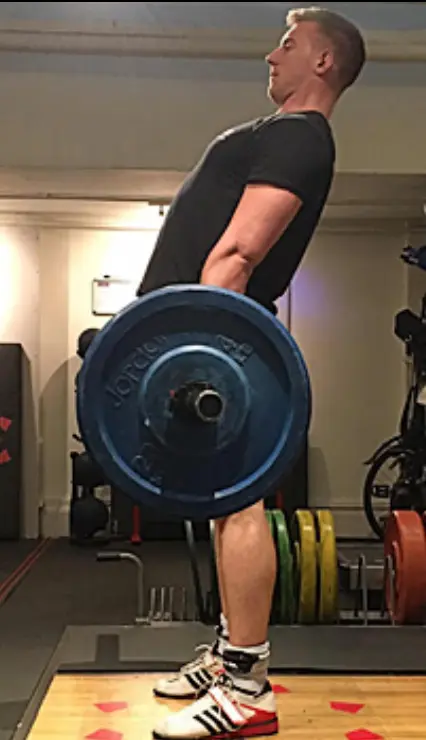
As with excessive flexion, excessive extension of the lumbar spine under load is also a precursor to injury.
When a lifter leans back, it may be for one of two reasons: –
- Because the lifter doesn’t know how to use the hips to finish the lift
- It’s a bad habit they’ve acquired
Obviously, if it’s point #2, then they should simply stop doing it and aim to finish the lift standing tall and upright.
If this is happening to you, then either get someone to check out your technique and make sure you’re doing it properly or take a video of yourself to review. It’s a habit worth breaking immediately.
However, if the reason for leaning back in the deadlift is because the lifter doesn’t know how to use the hips in the deadlift, then time must be taken to correct this. This can be easily achieved with some bodyweight hip hinges, which teaches the lifter how to use the glutes in hip extension. This can then carry over to the latter portion of the deadlift and prevent the lifter from using lumbar extension in order to complete the lift.
Check out this video for a quick demonstration of how to use the hips in hip extension by putting a focus on posteriorly tilting the pelvis.
Once you’ve mastered hip extension in the hip hinge, introduce that technique into the conventional deadlift.
By making the hips the main focus of the movement, you take all the stress away from the lower back, which will drastically decrease the chance of pain in the lower back.
Summary
Low back pain in the deadlift is often the result of excessive loaded flexion or extension movements in the lumbar spine, which often results from the lifter creating insufficient tension and stability in the core and upper body.
When setting up in the deadlift, it’s imperative that you make sure the bar is in contact with the shins, so that you minimize the lever arm between the weight and your lower back.
Additionally, ensure that you pull the bar up against the plates in order to ‘take the slack out of the bar’ and can use the resistance to generate optimal core stability to lock the lumbar spine in place.
Finally, the end of the deadlift should be completed with hip extension – there should be zero movement in the lower back to finish the lift. Make sure you’re standing tall and not leaning back.
If you’ve ever suffered from low back pain in the deadlift, either during the training session, or in the following days, review these 3 points – could either of these three reasons be why you’re experiencing lower back pain?
If so, you don’t need to drop the deadlift from your training, but work on ironing out the issue so that you perfect your technique and keep your lower back pain-free and healthy, whilst building tremendous strength in your lower body.

